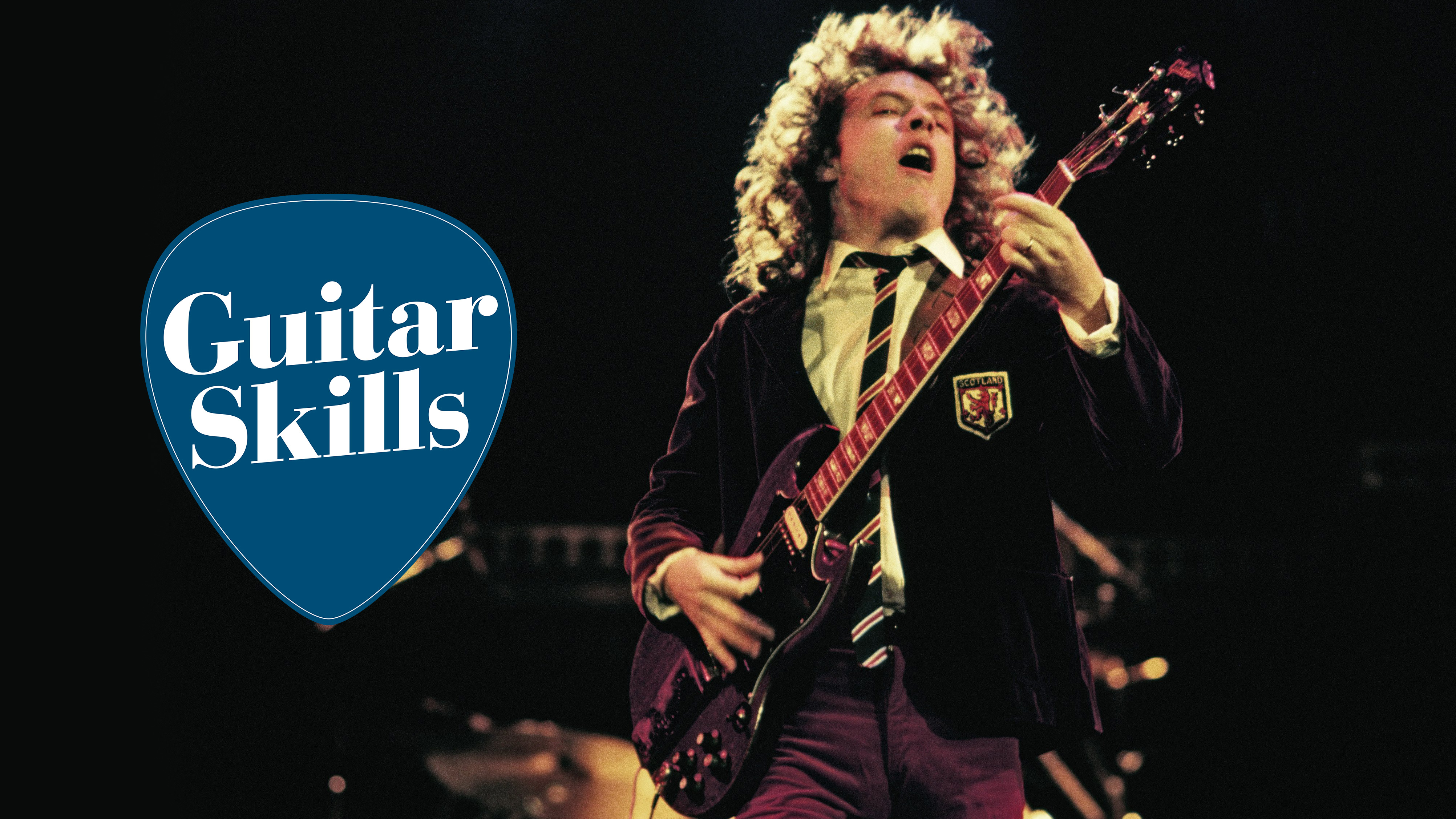Classic rock guitar riffs for beginners to learn featuring Fleetwood Mac, Led Zeppelin, AC/DC, The Eagles and more
Ready to step up from essential chords? It's time for the school of rock

Learning guitar riffs is a great way to kickstart your guitar-playing journey. Riffs can teach us a lot about technique, chord changes, speed building, songwriting and more. Especially the classic rock riffs of Zeppelin, Deep Purple, The Eagles and Cream that have stood the test of time.
As a beginner guitar player it is really important to have a selection of things to learn to help your playing develop and keep you inspired. Anything you learn should present a challenge of some sort, and provide you with new skills and ideas that you may not already have picked up.
In this lesson we’re going to check out 10 classic rock riffs that are perfect for beginner guitar players to sink their teeth into!
1. Cream - Sunshine of Your Love
This late '60s Eric Clapton riff is an ideal riff for any new guitar player. It is a single note phrase that moves across three strings. This riff will help with your cross string picking as it descends from the D string to the low E.
The slide in this should be played fast to create the sound of sliding into the note on the 10th fret, without hearing the starting note. There is also a small quarter tone bend which you can play by simply playing the note in question and pulling the string downwards very slightly.
2. AC/DC - Highway to Hell
"If you know your A, D and G chords, then you’re ready to rock this AC/DC classic.
"The D chord in the riff is played as a chord known as a D/F# which means the D chord has an F# note in the bass. You can play this with your thumb by rolling it over the top of the neck. If you can’t stretch to this note with your thumb, don’t worry, just play it as a regular D chord.
Want all the hottest music and gear news, reviews, deals, features and more, direct to your inbox? Sign up here.
"The G chord should be played as shown in the video, without the 2nd fret on the A string played, and an additional 3rd fret note on the B string."
3. Deep Purple – Smoke on the Water
The Smoke On The Water riff might be frowned upon by every single guitar store employee in the world, but that doesn’t mean you shouldn’t learn it!
This riff is made up of double stops (also known as dyads). You’ll notice that whatever fret you’re playing, you’re also playing the same fret on the string under it at the same time.
The original was recorded without a plectrum, but you can learn this with a plectrum if you haven’t tried any fingerstyle techniques yet.
4. Rolling Stones – (I Can't Get No) Satisfaction
This Stones classic started life as Keith Richards demonstrating what he wanted the horn section to do in the song. He used a fuzz pedal to create a raspy tone to emulate the horns, but the riff worked so well they kept it!
This is just 3 notes but it does have a few playing techniques involved on the way back down. You’ll be doing a pull-off from the 5th to the 4th fret on the A string, before sliding the 4th fret down to the 2nd.
This is a great introduction to basic techniques on one string.
5. Creedence Clearwater Revival – Bad Moon Rising
This Creedence Clearwater Revival song uses just three chords. D, A and G. This is a simple strumming song that is great for working on chord change speeds.
In the first bar, the D chord has a pair of strong breaks on the '1 &'. In the first bar there is a quick three-strum pattern on the second beat with the D chord. The A and G are played with strong beats on the '3 & 4 &'.
The second bar is the D chord played as strong beats on the '1 &' and '3 &' with the same three-note strum on the 2 and 4 beats.
6. Fleetwood Mac – Albatross
This one is a little longer, and while it's not that hard to play, there are a lot of parts to remember. The riff starts with some single notes paired with two chords, an A major triad and a G#m triad.
There is a melody section to this riff also that uses slides and crossing between the A and D strings while doing so.
With this riff being much longer, it’s worth slowing it down and learning it in segments as there are a few different challenges along the way.
7. Led Zeppelin – Heartbreaker
This Jimmy Page riff is a great way to introduce yourself to playing loosely with groove. Page was the master of writing rock riffs with great grooves and Heartbreaker always stands out as one of the best.
The riff itself is pretty easy to play, but the difficulty is learning not to play it straight and rigid. You want to keep this one loose and if you make a mistake, that’s ok, it adds to the Page vibe.
The riff showcases his clever use of small quarter-tone bends inside a riff to make things feel looser. The riff is an ascending riff that repeats. On every other repeat the riff alternates between a single open A and four picked open A notes.
8. David Bowie - Rebel Rebel
Rebel Rebel is a slightly more technical riff and requires a little more precision to play correctly.
The riff starts with an open D string, before going into a descending note line on the B string. While the notes on the B string are played, the high E is also played open as a drone against the fretted note. When fretting the B you need to make sure you leave finger clearance for the E to ring.
The second part of the riff starts with an open low E note that needs to be cut short – you don’t want this to ring. Followed by a descending single note run from the B to the D string before going back to the start.
9. ZZ Top – Tush
Tush is a great blues shuffle riff that uses some string skipping and double stops. The 3rd fret on the low E string is the starting note for the riff and the double-stops are on the 3rd and 5th frets of the D and G.
You’ll be jumping between the low E string and the double stops. You should try to use your index finger for the 3rd fret on the Low E and the double stop on the D and G while using a higher finger for the 5th fret double stop.
After one repeat, the riff repeats with a slide from the 1st to the 3rd fret on the low E. The riff remains the same, but the additional slide is added.
10. The Eagles - Life in the Fast Lane
This riff is a very quick riff that Joe Walsh from the Eagles wrote as a guitar warm-up exercise. Even if you can’t play this one at full speed right away, it makes for a great coordination exercise.

The 10 essential songs beginner guitar players can learn now
Start slow with this because there are a few things to watch out for. The riff starts with a hammer on followed by rolling your third finger from the 7th fret of the A to the 7th of the D, this can take a while to get used to doing because you’ll be fretting with the pad of your finger.
There are a few quarter-tone bends and fast slides scattered through the riff.
The other thing to watch out for is the timing of the second half of the riff. On the first repeat, the second part lands on the 1 beat, on the repeat it has a more rushed feel and lands on the '&' of 4.
Leigh Fuge is a guitar player and content creator with a love for all things '80s. When he’s not creating gear demos for his Youtube channel he’s teaching students via his online guitar course Right Notes Music Tuition. Off camera he spends most of his time travelling around the UK performing at functions and corporate events. www.instagram.com/leighfugeguitar
